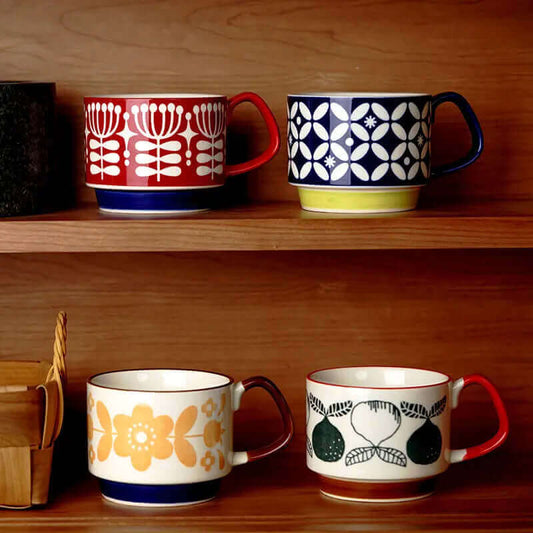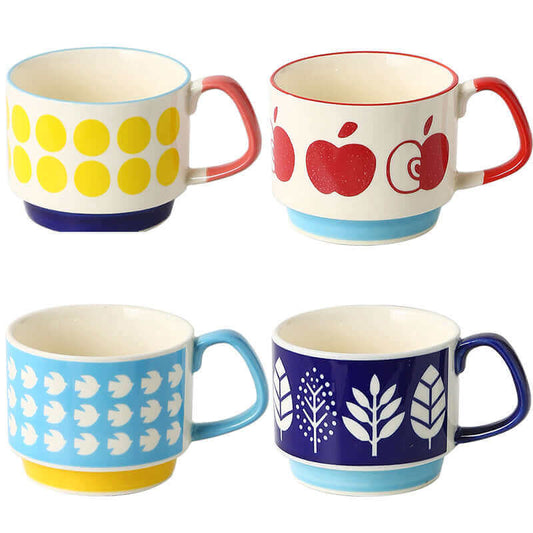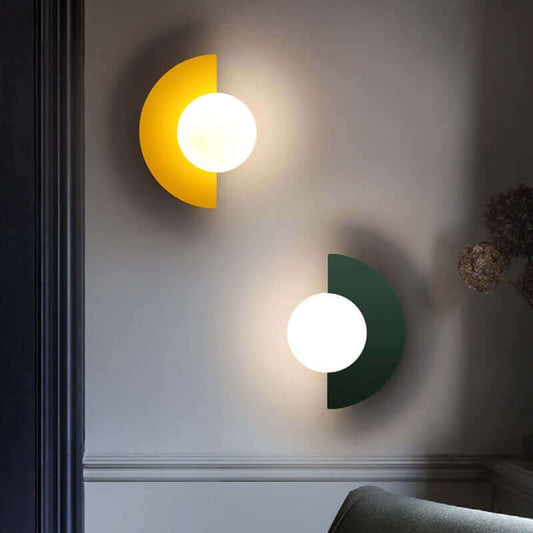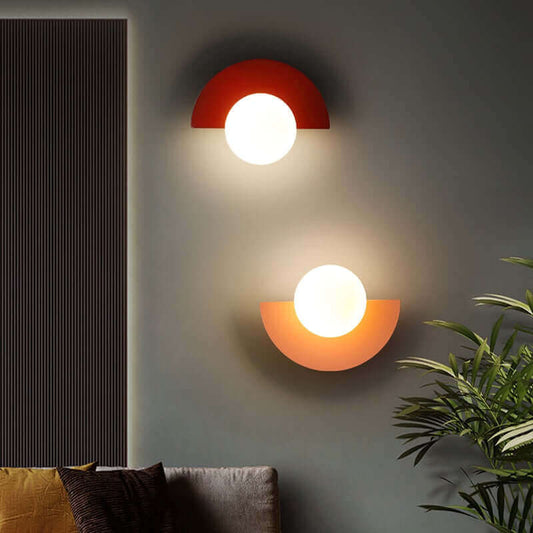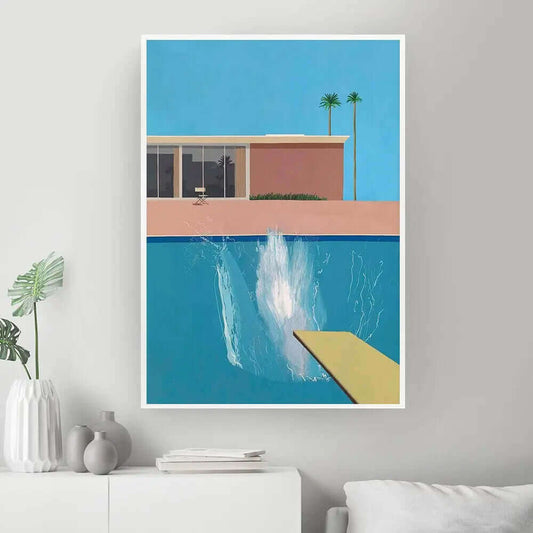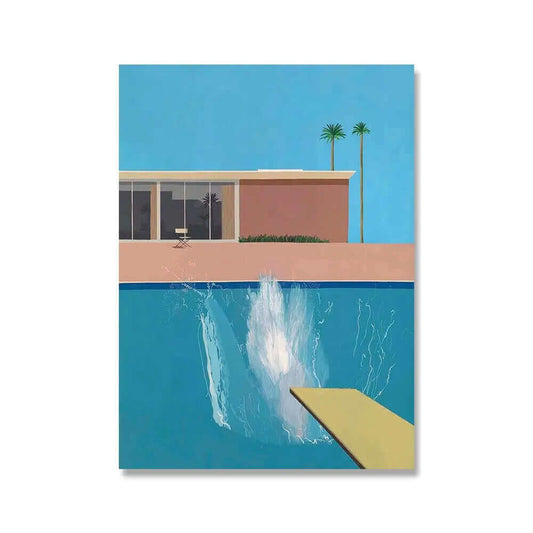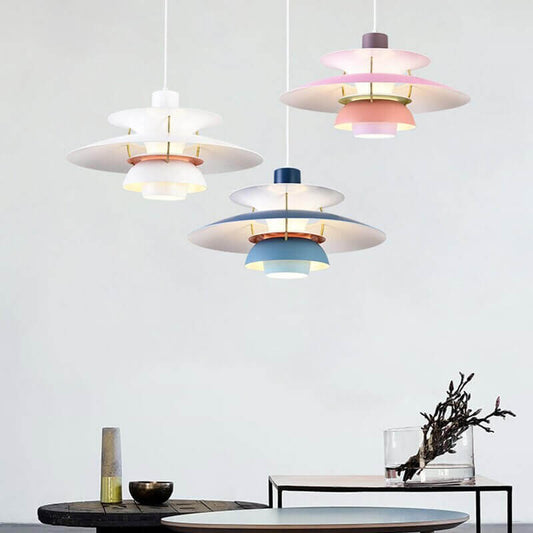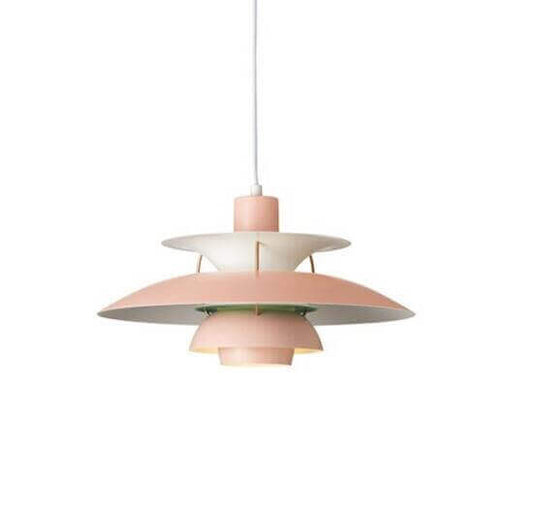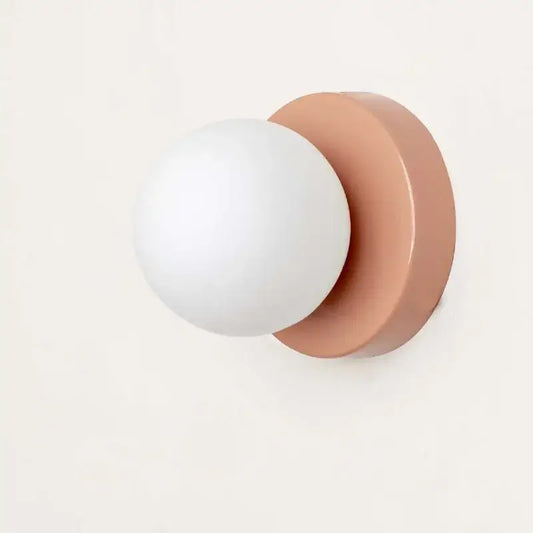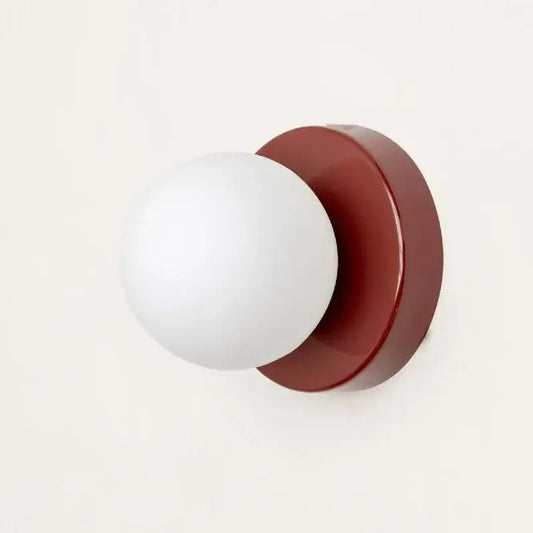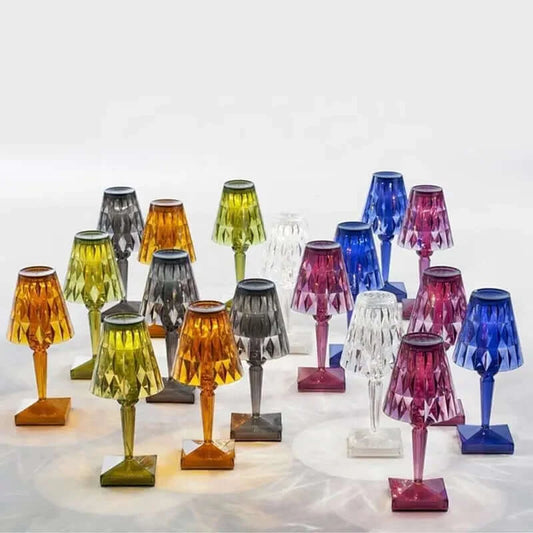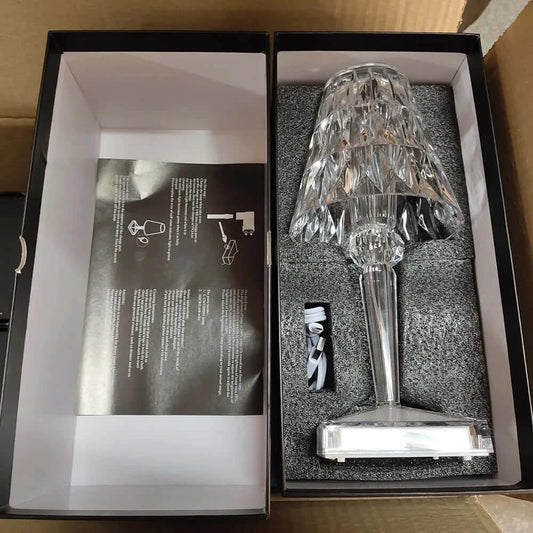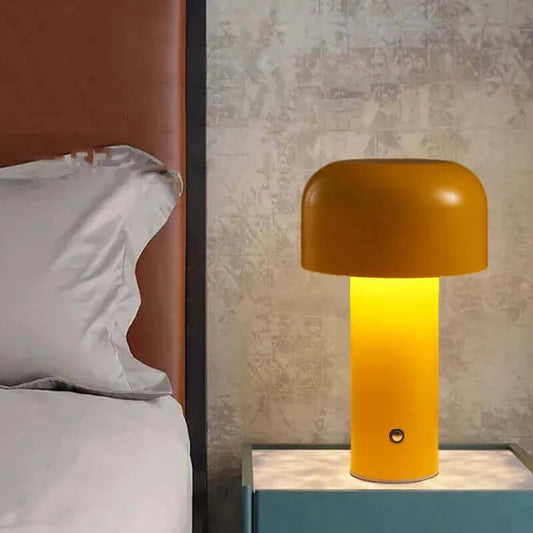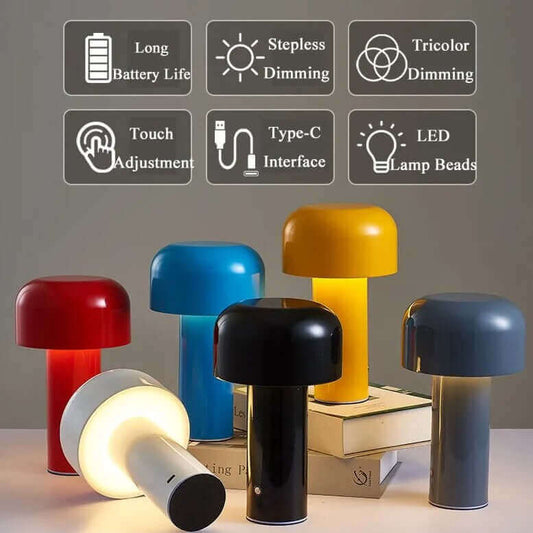Welcome to our lesson on Scandinavian Style: Architectural & Interiors! In this enriching journey, we will delve into the captivating world of Scandinavian design, exploring its architectural influences, interior aesthetics, and the principles that have made it an enduring global trend. Scandinavian Style is celebrated for its emphasis on simplicity, functionality, and a deep connection with nature, making it an inspiration for designers and homeowners worldwide.
I. Scandinavian Architecture: A Harmony of Form and Function
Scandinavian architecture is a testament to the marriage of form and function. Rooted in the region's natural landscapes and climate, Scandinavian architects have embraced an ethos of harmonizing buildings with their surroundings. Key architectural principles include clean lines, minimalist exteriors, and an abundance of natural light to create bright and airy spaces.
References:
- Nordic Modernism: Scandinavian Architecture 1890-2015. William C Miller. EAN/UPC 9781785002366.
Modernism played a pivotal role in shaping the trajectory of Scandinavian architecture in the twentieth and twenty-first centuries. This design movement encapsulated a progressive and cosmopolitan character that became intertwined with, and embraced, the social welfare programs of the Nordic states. Renowned globally for its keen sensitivity to local contexts, thoughtful use of materials, and refined detailing, Nordic architecture has continuously evolved, building upon its modernist foundations.
In this compelling new book, we embark on a journey to explore the romantic and classical architectural underpinnings that laid the groundwork for Nordic modernism. Delving into the origins of Nordic Functionalism, we witness the evolution of a design ethos that sought to merge aesthetics with functionality, giving rise to a distinctive Scandinavian approach to architecture.
The post-war period marked a pivotal juncture, witnessing the maturation and expansion of Nordic modern architecture. We uncover the transformative projects and urban developments that shaped the region's built environment, reflecting the evolving needs of society and urban living.
As the twentieth century drew to a close, Scandinavian modernism received inspiration from international influences, leading to intriguing design explorations and cross-cultural exchanges. We witness how the Nordic aesthetic continued to evolve, while embracing a global perspective that enriched its architectural language.
In the twenty-first century, contemporary Nordic architecture emerged as a tapestry of global and local currents, reflecting the dynamic interplay between tradition and innovation. We celebrate the ingenuity of Nordic architects as they grapple with the challenges of sustainability, environmental consciousness, and social inclusion, pushing the boundaries of design excellence.
Throughout this captivating exploration, we encounter iconic buildings, urban landscapes, and residential projects that exemplify the enduring legacy of Nordic modernism. The book brings to light the architects, visionaries, and thinkers who have contributed to the evolution of Scandinavian architecture, leaving an indelible mark on the region's design identity.
Through stunning visuals and insightful narratives, this book showcases the rich tapestry of Scandinavian architecture, celebrating its modernist roots while embracing the ever-evolving landscape of contemporary design. Join us on this enlightening journey through the Nordic architectural heritage, where tradition meets innovation and where modernism continues to be a guiding force shaping the built environment of tomorrow.
2. "Scandinavian Style at Home: A Room-by-Room Guide" by Allan Torp.
In the realm of interior design, the allure of Scandinavian philosophy has become an ever-increasing source of inspiration. Rooted in the principles of practicality, accessibility, and affordability, Scandinavian design promotes the creation of everyday objects that seamlessly marry beauty and functionality. This handbook serves as a guiding light, revealing the art of crafting a bespoke home, perfectly inspired by the essence of Scandinavian style.
Taking a step-by-step approach, this book traverses through each room of the home, unlocking the secrets to achieving an authentic Scandinavian ambiance. Classic items of furniture and signature accessories, renowned for their timeless appeal, take center stage. Through in-depth case studies, we gain insight into the essential elements that define the charm of Scandinavian design, drawing inspiration from real-world examples.
Colors play a pivotal role in personalizing these iconic styles to suit individual tastes and preferences. In this handbook, we explore a myriad of color combinations, empowering homeowners to infuse their living spaces with a touch of personal flair while still honoring the essence of Scandinavian aesthetics.
Whether you have been captivated by the enchanting allure of Scandinavian style or are eager to imbue your home with its timeless charm, this book stands as an invaluable resource. Its comprehensive guidance empowers homeowners to navigate the intricacies of Scandinavian design, transforming their abodes into warm, inviting sanctuaries that exude both elegance and practicality.
For those yearning to bring the simplicity and elegance of Scandinavian design into their daily lives, this handbook serves as a compass, leading you on a journey through the elements that define this iconic style. Let the timeless appeal of Scandinavian aesthetics infuse your home, creating a space that perfectly reflects your unique personality and lifestyle. With this book as your trusted companion, the art of Scandinavian design becomes an attainable and gratifying endeavor. Unlock the secrets of this enchanting philosophy and witness the transformation of your home into a haven of Scandinavian-inspired serenity.
II. The Allure of Nordic Interiors
Scandinavian interiors exude warmth, comfort, and a strong connection with nature. Neutral color palettes, such as soft whites, soothing grays, and warm beiges, create a serene atmosphere. Natural materials like wood, stone, and wool add tactile appeal and a sense of rustic charm. Functional furniture with clean lines and versatile designs enhance the efficiency of spaces, reflecting the Scandinavian ethos of simplicity and practicality.
References:
-
"Scandinavian Design" by Charlotte Fiell and Peter Fiell.
Scandinavian Design Unveiled: A Comprehensive Guide to Iconic Creations
Scandinavia, renowned for its distinctive and democratic designs, has captivated the world with creations that effortlessly bridge the gap between craftsmanship and industrial production, form and functionality. Welcome to an all-encompassing guide that unveils the essence of Scandinavian design, taking you on a captivating journey through its furniture, glass, ceramics, textiles, jewelry, metalware, and industrial marvels from 1900 to the present day.
This comprehensive compendium delves into the captivating world of Scandinavian design, featuring in-depth entries on over 180 visionary designers and design-led companies. Each entry illuminates the brilliance of the creative minds that have contributed to the region's design legacy, from the iconic Verner Panton and Arne Jacobsen to the visionary Alvar Aalto and Timo Sarpaneva.
Embark on a captivating voyage through the works of Hans Wegner, Tapio Wirkkala, Sigvard Bernadotte, Stig Lindberg, Ingeborg Lundin, Finn Juhl, and more, each leaving an indelible mark on the world of design. From renowned furniture manufacturers like Fritz Hansen and Artek to glassware giants such as Le Klint, Gustavsberg, Iittala, and Orrefors, explore a world where form and function unite in perfect harmony.
As you immerse yourself in the rich tapestry of Scandinavian design, prepare to discover the cultural gems that define the region's creative landscape. This guide includes a curated list of important design-related destinations scattered across Norway, Sweden, Denmark, Iceland, and Finland, inviting you to experience the heart and soul of Scandinavian design in its natural habitat.
Featured within these pages are renowned names that have shaped the Scandinavian design narrative, including Volvo, Saab, Royal Copenhagen, Holmegaard, Arabia, Marimekko, and Georg Jensen, each reflecting the enduring legacy of their ingenuity.
About the Series: "Bibliotheca Universalis" - This series of compact cultural companions celebrates the eclectic TASCHEN universe, offering a gateway to the world's most captivating and iconic subjects. With Scandinavian Design as our focal point, we continue our mission to immerse readers in the richness of cultural heritage, inviting you to explore the multifaceted realm of design through the lens of Scandinavian brilliance. Embrace the essence of Scandinavian design, where beauty, practicality, and creativity converge, inspiring generations past and present.
Scandinavian Modern Furnishings 1930-1970: Designed for Life, Michael Ellison
Scandinavian Modern Design: A Mid-century Impact
During the middle of the twentieth century, the seemingly unassuming quartet of Denmark, Sweden, Norway, and Finland, with a collective population smaller than New York City's, orchestrated a design revolution that reverberated across the world. The impact of Scandinavian Modern design was unprecedented, leaving an indelible mark on the global design landscape—a legacy that remains unparalleled.
As the Post-World War II American consumer sought new horizons of style and quality, Scandinavian Modern design stepped onto the world stage with confidence. Its distinctive aesthetic and exquisite craftsmanship resonated profoundly with the discerning audience, creating an ever-growing demand for this unique design philosophy.
In this meticulously researched volume, we delve into the fascinating world of Scandinavian Modern design, focusing on over 60 visionary designers who shaped the movement. From the 1930s to the 1970s, the book presents a captivating journey through the evolution of furniture and household objects, with a special emphasis on those crafted from wood and metal. The seamless blend of form and functionality characterizes each creation, embodying the essence of Scandinavian Modern style.
Hundreds of captivating photographs bring to life the creations that captivated the world, providing a visual journey through the rich heritage of Scandinavian design. An extensive introduction sets the stage, unveiling the historical context and the factors that fueled this unparalleled surge in creativity.
A comprehensive timeline offers a chronological perspective on the movement's progression, while appendices provide valuable information on furniture makers, designers, distributors, and sources, elevating this volume to an indispensable reference for design enthusiasts, collectors, dealers, and researchers.
Detailed captions, accompanied by current prices, offer valuable insights into the world of collecting Scandinavian Modern design, ensuring that this book remains relevant and practical for enthusiasts seeking to build their collections.
A large bibliography and a well-organized index round out this comprehensive resource, making it a treasure trove of information and inspiration for anyone enamored by the allure of Scandinavian design.
As we embark on this captivating journey, the legacy of Scandinavian Modern design continues to enrich our understanding of design history and innovation. Discover the brilliance of a movement that transcends time, leaving an enduring legacy that continues to inspire design aficionados worldwide. Whether you seek to understand the historical context or simply immerse yourself in the beauty of Scandinavian Modern creations, this book is a must-have addition to your design library.
III. Embracing Hygge: The Cozy Essence of Scandinavian Living
Welcome to "Embracing Hygge: The Cozy Essence of Scandinavian Living"! In this comprehensive course, we delve into the enchanting world of Hygge, a Danish concept that lies at the heart of Scandinavian living. Hygge embodies the art of creating an atmosphere of coziness, contentment, and well-being, transforming homes into inviting havens during the chilly Nordic winters. Join us on a journey to discover the key elements of Hygge, how to incorporate them into your interiors, and how to embrace a lifestyle that cherishes the simple joys and pleasures of daily living.
Unraveling the Essence of Hygge
In this first module, we embark on a captivating exploration of Hygge, seeking to unravel its essence and discover its roots deeply embedded in Danish culture. Hygge (pronounced "hoo-ga") is a term that defies a simple translation, as it encompasses a rich tapestry of emotions and experiences that bring forth a feeling of coziness, contentment, and well-being. To truly embrace Hygge, we must venture beyond the surface and understand its profound impact on the Danish way of life.
Hygge and Danish Culture: A Historical Perspective
To comprehend the true essence of Hygge, we delve into its historical origins and its significance in Danish culture. Hygge traces its roots back to the 18th century when it first emerged as a cultural concept in Denmark. Throughout the centuries, it has become deeply ingrained in the Danish way of life, shaping the nation's lifestyle and values.
In Danish society, Hygge is not just a fleeting trend but a way of living that permeates every aspect of daily life. It has become an integral part of the national identity, and its essence is reflected in Danish traditions, rituals, and social interactions.
Hygge Beyond Interior Design: A Holistic Approach
While Hygge is often associated with cozy interior design and home decor, it extends far beyond aesthetics. In this module, we explore the holistic nature of Hygge, embracing a way of life that transcends material possessions. At its core, Hygge celebrates the intangible aspects of life that bring joy and contentment. It encourages individuals to cultivate a mindful presence, fully immersing themselves in the present moment and finding happiness in the simple pleasures.
Principles of Hygge: Comfort, Connection, and Mindfulness
Central to the essence of Hygge are three fundamental principles: comfort, connection, and mindfulness.
-
Comfort: Hygge seeks to create an environment of comfort and coziness, where individuals can feel at ease and at home. It involves incorporating soft textiles, plush cushions, and warm lighting to foster a sense of physical and emotional comfort. Embracing simplicity in design and decluttering spaces also contribute to a soothing atmosphere that nurtures well-being.
-
Connection: Hygge emphasizes the importance of meaningful connections with loved ones and the community. It encourages moments of togetherness, such as sharing meals, engaging in heartfelt conversations, or enjoying activities with family and friends. Building strong social bonds and nurturing relationships contribute to a sense of belonging and happiness.
-
Mindfulness: Embracing mindfulness is a vital aspect of Hygge living. It involves being fully present in the moment, savoring experiences, and finding joy in life's little pleasures. Mindfulness enables individuals to let go of worries and stresses, immersing themselves in the present with a sense of gratitude for what they have.
By understanding these principles, participants can begin to incorporate Hygge into various aspects of their lives, not just in their homes but also in their interactions, daily routines, and overall approach to well-being.
As we conclude this module, participants will have gained a deeper appreciation for the essence of Hygge and its roots in Danish culture. Hygge transcends interior design, becoming a way of life that prioritizes comfort, connection, and mindfulness. By embracing these principles, participants can embark on a transformative journey towards creating a life that cherishes the simple joys, nurtures meaningful connections, and fosters a sense of contentment and well-being. As we progress through the course, we will continue to explore how to infuse our living spaces with the essence of Hygge, creating warm and inviting havens that embody the very heart of Scandinavian living.
The Art of Coziness - Soft Textiles and Plush Cushions
In Module 2, we immerse ourselves in the art of coziness, delving deep into the world of soft textiles and plush cushions—the quintessential elements that contribute to a Hygge-infused ambiance. These simple yet transformative additions to our living spaces have the power to evoke feelings of warmth and comfort, creating an inviting atmosphere that beckons us to unwind and embrace tranquility.
The Role of Soft Textiles in Creating Coziness
Soft textiles are the heart and soul of Hygge living, as they epitomize the very essence of comfort and warmth. From sumptuous throws to luxurious blankets, soft textiles envelop our senses, cocooning us in a world of serenity. In this module, we explore the various types of soft textiles and their unique attributes. Participants will gain insights into the ideal fabrics for different seasons, how to choose textures that evoke a sense of tactile delight, and the power of colors in creating a soothing ambiance.
The Power of Plush Cushions in Inviting Relaxation
Plush cushions, like supportive friends, cradle us in comfort and tranquility. In this module, we delve into the significance of plush cushions in Hygge living, understanding how to curate a collection that strikes a balance between aesthetics and functionality. Participants will learn about different cushion fillings, selecting the right sizes and shapes for various furniture pieces, and creating inviting arrangements that inspire relaxation and ease.
Choosing the Right Fabrics, Textures, and Colors
Embracing Hygge is about curating a space that resonates with our personal sense of coziness. In this segment, we guide participants through the process of selecting the right fabrics, textures, and colors that align with their unique preferences and design goals. Participants will gain insights into the properties of different fabrics, such as cotton, wool, and cashmere, understanding their individual contributions to creating a warm and inviting atmosphere.
Textural play is key to the art of coziness, and participants will discover how to blend various textures to achieve a layered and inviting look. Whether it's combining smooth silk with chunky knits or pairing soft velvets with woven patterns, participants will gain the expertise to harmoniously balance textures for visual and tactile appeal.
Colors play a vital role in setting the tone for a Hygge-infused ambiance. From soothing neutrals to warm earthy tones and inviting pastels, participants will explore the psychology of color and its impact on our emotional well-being. Through carefully chosen hues, we create an environment that fosters relaxation, serenity, and a sense of sanctuary.
By the end of Module 2, participants will have honed their understanding of the art of coziness through soft textiles and plush cushions. They will have gained the expertise to curate a selection of textiles that not only embraces comfort and warmth but also reflects their personal style. Participants will be empowered to create an inviting oasis in their homes, a space where they can truly unwind, find solace, and embrace the serenity that Hygge living brings. With the knowledge of choosing the right fabrics, textures, and colors, participants can embark on a journey towards curating a space that resonates deeply with their desire for comfort and relaxation. As we move forward in the course, we will continue to explore more elements that enrich the Hygge experience, transforming our living spaces into true havens of well-being and contentment.
Note on Fire Safety and Soft Furnishings for Professional Interior Designers.
As professional interior designers, creating inviting and cozy spaces is at the heart of your craft. Soft textiles play a significant role in adding comfort and warmth to interiors, but it is essential to balance aesthetics with safety, especially when it comes to fire regulations. In this article, we delve into the critical aspect of fire safety concerning soft textiles in interior design. Understanding the fire regulations and best practices will enable you to create spaces that not only exude style but also prioritize the safety and well-being of the occupants.
The Importance of Fire Safety in Interior Design
When it comes to interior design, aesthetics and functionality often take center stage. However, it is equally vital to prioritize fire safety. Fires can spread rapidly, endangering lives and causing extensive damage. As interior designers, you play a crucial role in specifying materials that meet fire regulations without compromising on the overall design vision.
Fire Regulations for Soft Textiles: A Comprehensive Overview
-
Flame Resistance Ratings: One of the fundamental aspects of fire regulations is the flame resistance rating of soft textiles. These ratings determine how textiles respond to ignition sources and their ability to resist flames. It is essential to select textiles with appropriate flame resistance ratings to minimize fire hazards in interior spaces.
-
Fire-Retardant Treatments: Some soft textiles can be treated with fire-retardant chemicals to enhance their fire resistance properties. When considering fabrics for upholstery, drapery, or decorative elements, inquire about fire-retardant options to meet safety standards.
-
Building Codes and Standards: Familiarize yourself with local building codes and fire safety standards that dictate the use of soft textiles in interior spaces. These codes may vary from one jurisdiction to another, so staying updated with the latest regulations is crucial.
-
Furniture and Upholstery Compliance: Soft textiles used in furniture and upholstery should meet specific flammability standards. Ensure that the textiles you specify comply with relevant regulations for furniture applications, especially for commercial projects.
-
Labeling Requirements: Many countries have stringent labeling requirements for soft textiles. Look for labels indicating compliance with fire safety standards to verify that the fabrics meet the necessary regulations.
Best Practices for Fire-Safe Soft Textiles
Incorporating fire-safe soft textiles into your designs doesn't mean compromising on style. Here are some best practices to consider:
-
Seek Certified Textiles: Choose soft textiles that have been tested and certified for fire resistance. Look for labels from recognized testing laboratories to ensure compliance.
-
Layering and Use of Accessories: Instead of relying solely on one type of textile, consider layering materials to achieve both fire safety and design goals. Incorporate decorative elements like metal accents or fire-safe wall coverings to add visual interest.
-
Collaborate with Suppliers: Establish strong relationships with fabric suppliers who are well-versed in fire regulations. They can guide you in selecting the right textiles for each application.
-
Educate Clients: Educate your clients about the importance of fire safety in interior design. Discuss the selection process for soft textiles, highlighting the role they play in ensuring the safety of the space.
As professional interior designers, fire safety is a critical aspect of your work. Prioritizing fire regulations when selecting soft textiles can save lives and protect property. By understanding flame resistance ratings, fire-retardant treatments, and local building codes, you can confidently create beautiful, cozy spaces that also meet fire safety standards. Collaboration with knowledgeable fabric suppliers and educating clients about the importance of fire safety will further enhance the success of your designs. Let fire safety be an integral part of your design journey, ensuring that the spaces you create are not only aesthetically pleasing but also safeguarded from potential fire hazards.
References:
- "The Little Book of Hygge: Danish Secrets to Happy Living" by Meik Wiking.
- This best-selling book offers valuable insights into the concept of Hygge and its application in everyday life, providing a foundation for our exploration.
Module 3: The Soft Glow of Candles
In Module 3, we embark on a captivating exploration of the enchanting world of candlelight, uncovering its pivotal role in the art of Hygge living. Candlelight has the unique ability to create a magical ambiance, infusing spaces with a sense of serenity and intimacy. As we delve into the profound impact of candles on Hygge, participants will discover how this soft glow elevates the sense of coziness, turning ordinary evenings into truly special and cherished moments.
The Power of Candlelight in Hygge Living
Candlelight has been revered throughout history for its ability to captivate hearts and minds. In Hygge living, candles take center stage as essential elements in curating an inviting and tranquil atmosphere. The soft, flickering glow of candles brings a sense of warmth and comfort to any space, instantly transforming it into a haven of serenity. The dancing shadows cast by the candles create a mesmerizing interplay of light and shadow, evoking a sense of enchantment that transports us away from the worries of the outside world.
Candlelit Comfort - Creating a Calming Atmosphere
In this segment, we explore the techniques and principles of incorporating candlelight into interior spaces to enhance the sense of coziness. Participants will gain insights into the types of candles best suited for different occasions and settings. Whether it's delicate tea lights scattered on a coffee table or elegant pillar candles adorning a dining table, each candle contributes to a comforting ambiance that embraces all who reside within the space.
Candlelight and Intimacy - Fostering Meaningful Connections
In Hygge living, candlelight serves as a catalyst for meaningful connections with loved ones and friends. As we delve into the profound impact of candlelit settings on human emotions, we learn how candlelight fosters intimacy and authentic communication. Participants will discover how candlelit dinners, family gatherings, or cozy evenings with friends under the soft glow of candles create memories that linger in the heart for a lifetime.
Designing with Candles - Enhancing Aesthetic Appeal
In this segment, we explore the art of designing with candles to elevate the aesthetic appeal of interior spaces. Participants will learn how to incorporate candles into various design styles, from modern and minimalist to traditional and eclectic. Discover how candle holders, lanterns, and candelabras can become statement pieces, adding an artistic touch to the overall design.
Safety First - Candlelight Precautions
While candles infuse spaces with magic, it is essential to practice candle safety. In this module, we discuss best practices for using candles responsibly to prevent fire hazards. From choosing flameless LED candles for certain settings to keeping candles away from flammable materials, participants will gain valuable insights into ensuring a safe and enchanting candlelit atmosphere.
By the end of Module 3, participants will have explored the captivating allure of candlelight and its indispensable role in Hygge living. They will have gained a profound understanding of how candlelight creates a calming and intimate atmosphere, elevating the sense of coziness and making evenings truly special. Armed with the knowledge of designing with candles and candle safety, participants will have the expertise to infuse their interior spaces with the enchantment of candlelight, embracing the essence of Hygge living and fostering meaningful connections with those they cherish. As we continue our journey, we will uncover more elements that contribute to the art of Hygge, transforming our living spaces into sanctuaries of warmth, comfort, and joy.
You can start your decorating style with these scandi candle holders by Nauradika: https://www.nauradika.com/products/luxury-nordic-glass-photophor
Module 4: Harmonious Color Palettes - Embracing Warmth
In Module 4, we embark on an exciting journey into the world of color, exploring its profound significance in crafting a Hygge-inspired interior. Color is a powerful tool that can evoke emotions, set moods, and shape the ambiance of a space. In this module, participants will discover how to leverage warm and earthy color palettes to create an inviting atmosphere that exudes comfort, tranquility, and the unmistakable charm of Hygge living.
The Emotional Impact of Color in Interior Design
Color has a direct impact on our emotions and well-being. Different hues evoke different feelings, and the right color choices can contribute significantly to the overall atmosphere of a space. In this segment, we explore the psychology of warm colors, such as soft whites, soothing grays, and warm beiges, and how they create a sense of calmness, security, and coziness. Participants will understand how to use color strategically to foster an inviting and harmonious environment in their design projects.
Creating a Warm and Inviting Ambiance
In this segment, participants will delve into the art of using warm and earthy color palettes to set the stage for an inviting ambiance. Soft whites, reminiscent of fresh snowfall, evoke purity and serenity. Soothing grays, like a gentle mist, add depth and sophistication to a space. Warm beiges, reminiscent of sun-kissed sand, infuse a room with a sense of comfort and natural warmth. By understanding the unique qualities of each color, participants will gain the knowledge to curate color palettes that embrace the heart of Hygge living.
References:
Colour Design: Theories and Applications, Janet Best.Elaborating on Harmoniously Combining Warm Colors for Interior Design
In this segment of our course, participants will embark on an enlightening journey into the art of harmoniously combining warm colors, transforming interior spaces into balanced and visually appealing havens of comfort and well-being. Understanding color relationships, such as complementary, analogous, and monochromatic schemes, will serve as the foundation for creating interiors that exude unity and coherence.
1. Warm Colors: Emanating Comfort and Tranquility
Warm colors, such as soft whites, soothing grays, and warm beiges, form the heart of our color palette. With their inherent ability to evoke feelings of comfort and tranquility, these hues create a nurturing ambiance that welcomes and embraces occupants. Participants will explore the unique attributes of each warm color, understanding how they contribute to the overall mood of a space.
2. The Power of Color Relationships
Delving into color relationships opens up a world of possibilities in interior design. Participants will discover how the strategic pairing of warm colors can amplify their impact and create visually captivating spaces. We will explore three primary color relationships:
a) Complementary Color Scheme: Participants will learn the art of pairing warm colors with their complementary counterparts from the color wheel. The dynamic interplay of colors opposite each other on the wheel creates a harmonious balance, adding vibrancy and depth to the interior. We will explore how to use this scheme in both bold and subtle ways to create focal points and enhance visual interest.
b) Analogous Color Scheme: This scheme involves the seamless blending of neighboring warm colors on the color wheel. Participants will understand how analogous color combinations contribute to a sense of harmony and cohesiveness. We will explore how to achieve a smooth transition of hues, creating interiors that evoke a sense of natural flow and serenity.
c) Monochromatic Color Scheme: Participants will embrace the elegance of the monochromatic scheme, which revolves around variations of a single warm color. We will delve into the art of layering different shades and tones of a hue, generating a visually rich and sophisticated environment. Monochromatic interiors exude a sense of understated elegance and allow for the celebration of subtle nuances within a color family.
3. Crafting Unity and Coherence
With a profound understanding of color relationships, participants will learn how to weave warm colors together to craft interiors that emanate unity and coherence. By strategically incorporating complementary, analogous, or monochromatic schemes, designers can create a seamless visual experience that resonates with the senses.
4. Enhancing Comfort and Well-Being
The harmonious combination of warm colors not only enhances the visual appeal of an interior but also influences the emotions and well-being of occupants. By choosing the right color combinations, designers can elevate the sense of comfort and tranquility in a space, fostering a welcoming environment that encourages relaxation and contentment.
Here participants acquired the expertise to deftly combine warm colors in their design projects, curating interiors that evoke a profound sense of unity, balance, and well-being. The strategic application of complementary, analogous, or monochromatic schemes empowers designers to create spaces that not only appeal to the eye but also nurture the soul. By embracing the art of harmonious color combinations, designers can transform interior spaces into serene and visually captivating sanctuaries of comfort and contentment.
Elaborating on Applying Color Palettes to Different Spaces
In this enlightening segment of our course, we delve into the art of applying warm and earthy color palettes to various interior spaces, showcasing their remarkable versatility and ability to create harmonious environments. Participants will gain insights into the strategic use of color choices that suit the unique functions and characteristics of each room, ensuring that every space exudes the inviting charm of Hygge living.
1. Understanding the Unique Identity of Each Space
Each room within a home possesses its own distinct identity and purpose. In this segment, participants will explore the nuances of different spaces, from the cozy intimacy of living rooms to the restful tranquility of bedrooms, the communal warmth of dining areas, and the focused productivity of home offices. Understanding the individuality of each space sets the stage for creating color palettes that cater to the specific needs and ambiance of the area.
2. Adapting Warm and Earthy Colors to Living Rooms
Living rooms serve as the heart of the home, where families and friends come together to connect and unwind. Participants will learn how to infuse living rooms with warmth and comfort through a well-curated color palette. Warm whites and soft grays can form a calming base, while accents of warm beiges can add an earthy touch. We will explore the strategic use of colors in furnishings, decor, and artwork to create a welcoming and inviting atmosphere.
3. Creating Serenity in Bedrooms
Bedrooms are sanctuaries of rest and rejuvenation. Participants will discover how to craft serene and tranquil bedroom spaces using warm and earthy colors. Soothing grays and soft beiges can create a sense of peacefulness, while warm whites can enhance the feeling of freshness and purity. We will explore how to integrate these colors into bedding, curtains, and accessories, fostering an atmosphere of coziness and relaxation.
4. Fostering Warmth in Dining Areas
Dining areas are places of gathering and shared meals, where warm colors can evoke a sense of conviviality. Participants will learn how to incorporate warm beiges and soft whites to create a welcoming dining environment. We will explore the interplay of colors in dining furniture, table settings, and lighting, encouraging a sense of togetherness and comfort during mealtime.
5. Encouraging Productivity in Home Offices
Home offices are spaces where focus and productivity take center stage. Participants will explore the use of warm and earthy colors to foster an environment of concentration and inspiration. Soft grays and warm beiges can provide a sense of stability, while the addition of warm whites can brighten the space. We will discuss how to incorporate these colors into office furniture, decor, and organization solutions, promoting a productive and harmonious workspace.
6. Creating a Seamless Flow of Warmth and Tranquility
Finally, participants will learn the art of creating a seamless flow of warmth and tranquility throughout the home. By maintaining a cohesive color palette that connects each space, designers can foster a sense of unity and harmony within the home. We will explore the use of color transitions and accents to ensure that the welcoming charm of Hygge living permeates every nook and cranny of the residence.
Through this segment, participants will gain the expertise to thoughtfully apply warm and earthy color palettes to various interior spaces, enhancing the unique identity of each room. By adapting colors to suit the functions and characteristics of living rooms, bedrooms, dining areas, and home offices, designers can imbue spaces with the heartwarming essence of Hygge living. The creation of a seamless flow of warmth and tranquility throughout the home ensures that occupants can embrace the comfort and coziness of Hygge living in every corner, fostering a sense of well-being and contentment in their daily lives.
Armed with the knowledge of color psychology and harmony, you will confidently embrace color as a transformative tool in their design projects. Through soft whites, soothing grays, and warm beiges, you will create inviting and harmonious spaces that embody the essence of Hygge living—spaces that cocoon occupants in comfort, evoke feelings of tranquility, and celebrate the simple joys of life. As we continue our journey, we will explore more elements that contribute to the art of Hygge, weaving a tapestry of warmth and well-being in our interior designs.
Module 5: The Beauty of Natural Materials
Module 5 focuses on the beauty of natural materials, a hallmark of Scandinavian design. Discover how incorporating wood, stone, and other natural elements enhances the Hygge experience, forging a seamless connection to nature and creating spaces that embody simplicity and elegance.
References:
- "The Scandinavian Home: Interiors Inspired by Light" by Niki Brantmark.
- This book showcases stunning examples of Scandinavian interiors, emphasizing the use of natural materials and the beauty of simplicity.
Module 6: Embracing the Hygge Lifestyle
In the final module, we delve deeper into the Hygge lifestyle, embracing the intangible aspects of this concept. Explore how to cultivate gratitude, foster meaningful connections with loved ones, and savor the simple pleasures of life, all of which are integral to the Hygge way of living.
Congratulations on completing the course "Embracing Hygge:
The Cozy Essence of Scandinavian Living"! You are now equipped with the knowledge and insights to infuse your living spaces with the warm embrace of Hygge, creating havens of comfort and well-being. Embrace the art of coziness, the soft glow of candles, harmonious color palettes, and the beauty of natural materials to transform your home into a sanctuary of serenity. Embrace the Hygge lifestyle, cherishing the simple joys and nurturing meaningful connections that bring contentment and happiness to your everyday life. May you continue to embrace the essence of Hygge in every aspect of your home and life. Happy Hygge living!
Note: Please refer to the mentioned book and references for further reading and a deeper understanding of the concept of Hygge and its application in Scandinavian living. Each resource provides valuable insights that will enrich your journey of embracing Hygge in your home and lifestyle.
IV. Sustainability in Scandinavian Design
Scandinavian design has long embraced sustainability as a fundamental principle. The use of renewable materials, eco-friendly manufacturing practices, and energy-efficient technologies align with the region's commitment to environmental consciousness. Embracing sustainable design not only reduces the environmental impact but also contributes to the longevity and timeless appeal of Scandinavian interiors.
References:
-
Scandinavia Dreaming: Nordic Homes, Interiors, and Design"" by Angel Trinidad.
- This visually stunning book showcases sustainable and eco-conscious Scandinavian interiors that inspire environmentally friendly design.
V. Cultural Influences on Scandinavian Style
Understanding the cultural influences that shape Scandinavian design is essential to grasping its essence fully. Norse mythology, folklore, and a deep reverence for nature have all left an indelible mark on the region's design aesthetic. The integration of traditional craftsmanship and contemporary innovation further enhances the authenticity of Scandinavian interiors.
References:
-
Nordic: A Photographic Essay of Landscapes, Food, and People"" by Magnus Nilsson.
- This captivating book provides a glimpse into the landscapes and culture that inspire Scandinavian design.
VI. Bringing Scandinavian Style into Your Own Space: Embrace Timeless Allure
In this final and exhilarating section of our course, we embark on a journey of practicality, guiding you through the process of seamlessly infusing Scandinavian style into your interior design projects. With an array of expert tips and guidelines, we will empower you to create spaces that exude the unmistakable charm and timeless allure of Scandinavian design.
1. Embracing the Essence of Scandinavian Color Palette
The foundation of Scandinavian style lies in its distinctive color palette, and in this section, we explore the art of selecting the right hues for your projects. Soft whites, muted pastels, and natural earthy tones are at the core of this style, evoking a sense of calmness and harmony. Participants will learn how to incorporate these colors into their designs to create serene and inviting spaces that echo the spirit of Scandinavian living.
2. Choosing Furniture and Decor with Scandinavian Ethos
Furniture and decor are integral components of Scandinavian style, celebrated for their simplicity, functionality, and timelessness. We will delve into the selection of furniture pieces that align with the ethos of Scandinavian living. Clean lines, organic shapes, and natural materials like wood and leather are hallmarks of this design approach. Participants will discover how to curate a collection of furnishings that exudes the sophistication and comfort inherent in Scandinavian design.
3. Infusing Hygge into Your Design
Hygge, the Danish concept of coziness and contentment, is at the heart of Scandinavian living. In this segment, we explore how to infuse the essence of Hygge into your design projects. Soft textiles, plush cushions, and the soft glow of candles create an atmosphere of warmth and tranquility. Participants will learn how to incorporate these elements to evoke a sense of comfort and well-being in their interior spaces.
4. Celebrating Simplicity and Minimalism
Scandinavian style is synonymous with simplicity and minimalism, where every element has a purpose and nothing is superfluous. We will discuss the art of decluttering and embracing negative space to create a sense of airiness and serenity in your designs. Participants will learn how to balance functionality and aesthetics, ensuring that each design choice contributes to the overall visual harmony of the space.
5. Blending Modernity with Tradition
Scandinavian style seamlessly marries modernity with tradition, creating a dynamic and versatile design language. In this section, we will explore how to strike a balance between contemporary elements and classic design features to achieve an eclectic yet cohesive look. Participants will learn how to integrate vintage pieces with modern furnishings, adding depth and character to their interiors.
6. Creating Timeless Scandinavian Ambiance
Ultimately, Scandinavian style is about creating spaces that stand the test of time, transcending trends and fads. We will delve into the art of designing spaces that age gracefully, evoking a sense of timelessness and enduring beauty. Participants will gain insights into long-lasting design choices and materials that promise both longevity and elegance.
Your Scandinavian-Inspired Haven
As we conclude our course, you will emerge with the knowledge and skills to infuse Scandinavian style into your interior design projects. Embracing the essence of the Scandinavian color palette, selecting furniture and decor with the Scandinavian ethos, infusing Hygge into your designs, celebrating simplicity and minimalism, and blending modernity with tradition will enable you to create spaces that embody the timeless allure of Scandinavian design. By striking a harmonious balance between functionality and aesthetics, you will craft interiors that resonate with comfort, tranquility, and sophistication. Embrace the principles of Scandinavian style and create your very own haven of enduring beauty and serenity.
Conclusion
Congratulations on completing our comprehensive course on Scandinavian Style: Architectural & Interiors! You are now equipped with the knowledge and insights to embrace the simplicity, functionality, and connection with nature that define this captivating design movement. As you continue to explore the world of design, remember that Scandinavian Style offers a timeless and enduring source of inspiration for creating harmonious and beautiful spaces that stand the test of time.
Note: Please check the references mentioned in this course for further reading and a deeper understanding of Scandinavian Style. Each book provides valuable insights and visuals that will enrich your knowledge of this design movement. Happy designing!



